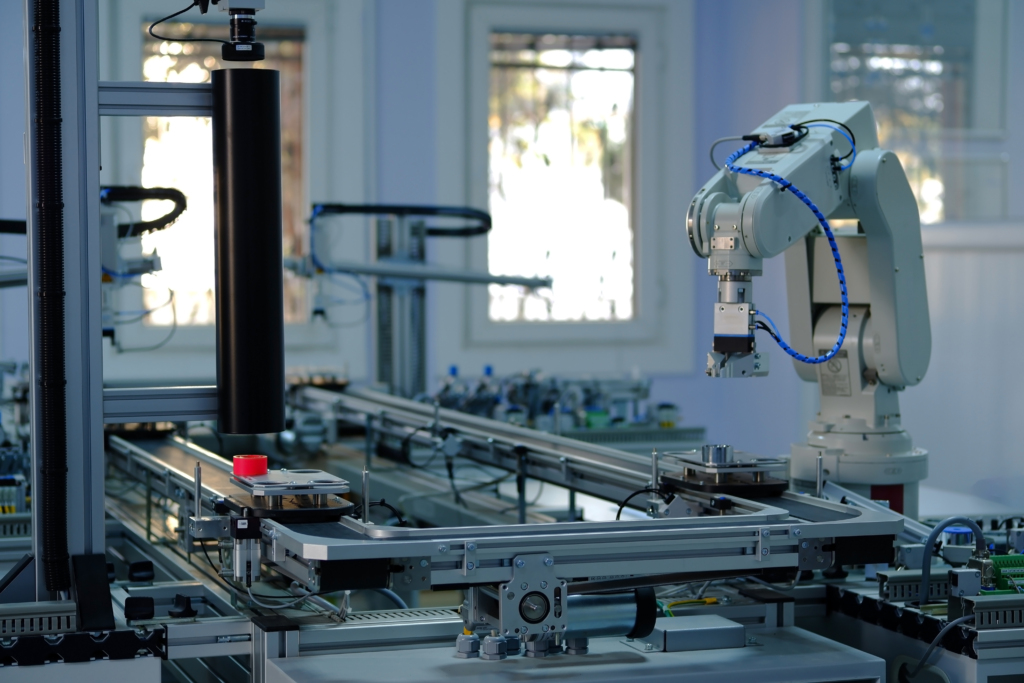Article
Manufacturing Automation Systems: When and What to Automate

Why consider manufacturing automation systems? Common scenarios and use cases
Custom automation is often the best measure domestic manufacturers can use to remain competitive, provided they have product demand to justify the cost. While labor cost and capacity generally drive the decision to implement manufacturing automation systems, related reasons include:
- High demand and a need for increased capacity
- A time-consuming, repetitive manufacturing process
- A new product being introduced that will boost demand
In this post, we’ll discuss additional justifications for manufacturing automation and utilization—a primary metric for analyzing the benefit of a custom automation solution.

Considerations for manufacturing automation systems, beyond cost and capacity
Manufacturing automation systems (with use cases across a vast range of industries and sub-sectors) are pursued to add value in other distinct ways. Here’s more on some of the value-adds related to automated manufacturing systems.
#1: Improved product quality
Automation in manufacturing provides consistency, which can be challenging to maintain with manual processes. It can include automated inspection, which continuously verifies product quality throughout the production day.
#2: Elimination of hazardous manufacturing jobs
Anything that involves toxic materials or physically dangerous processes is a candidate for automated manufacturing, as eliminating risk is always a powerful driver of change.
#3: Elimination of repetitive motion injuries
Repetitive manufacturing jobs often lead to injuries. Some of these injuries can be designed out of a process. Still, manufacturing automation solutions (including robotics and other related technologies) often provide the best means to eliminate an issue.
#4: Elimination of labor-intensive, undesirable work
Truly dull jobs can be a problem to support in the factory, as workers tend to migrate away from them. This creates an ongoing “hole” that must be continually filled with new workers. Manufacturing automation systems (as well as strategies to attract and retain talent) can fill this hole and eliminate the need to repeatedly train new employees for these tasks, only to see them move on.
Discussion about the value of automated manufacturing has dominated news cycles in the past. Due to strategic innovation clusters, the trend toward sophisticated automation solutions will continue to increase. These tools enable seamless human-robot interaction and other emerging manufacturing technologies. Companies like RoboDK, Beckhoff, and Yaskawa continue to create powerful technology that Fresh and other manufacturing automation companies use to build custom solutions and generate results faster.

Toward balanced utilization in automated manufacturing
Good custom automation projects are based on growing demand for the product and the need to expand capacity. However, the principal feature of a cost-effective manufacturing automation systems is utilization. The promises of Industry 4.0 are exciting, but economic justification is imperative: manufacturing automation systems must be utilized at or near their designed capacity, or else building them doesn’t make sense. Custom automated manufacturing systems are not cheap, and integrating robots or other autonomous systems should be weighed against anticipated value.
As a rule of thumb, most manufacturing automation systems should be designed to deliver 100% of demand at 75% to 85% utilization.
However, effective manufacturing automation systems can be considerably cost-effective when the system capacity is balanced with utilization. Balance is achieved when the rated output of the automated manufacturing system is slightly higher than the annualized product demand. As a rule of thumb, most manufacturing automation systems should be designed to deliver 100% of demand at 75% to 85% utilization. If product demand varies considerably over a year, the safety factor between rated capacity and demand should be set higher.
When choosing whether to partner with manufacturing automation companies, organizations should be careful about setting the rated capacity too high relative to the expected near-term demand. Manufacturing system capacity drives system cost—as one increases, so does the other. If the capacity target is too high above the actual demand, utilization will be low, and the automated manufacturing system will likely prove too expensive to implement.
The value of manufacturing automation systems
When considering whether to build and integrate automated manufacturing systems, it’s crucial to be strategic and accurately forecast demand and capacity to avoid underutilization. By adhering to the principles throughout this post, manufacturers can ensure that their investment in automation is both cost-effective and strategically beneficial, ultimately leading to improved productivity, safety, and operational efficiency.








